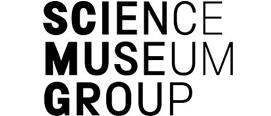Selective breeding and gene technology
It is important to consider where in a teaching scheme this topic should be delivered; it is good practice to ensure that students have a good understanding of DNA structure and protein synthesis before teaching this topic as this will help to minimise possible misconceptions.
In this topic students are expected to be able to explain the impact of the selective breeding of food plants and domestic animals and also be able to describe the main steps in the process of genetic engineering. Students should be able to explain some of the possible benefits and risks, including practical and ethical considerations, of using gene technology in modern agriculture and medicine.
There is a common misconception amongst GCSE students with how genetic engineering is used in plant breeding and with the potential issues of the use of genetic engineering in this way. Students seem to believe that every maize plant, for example, in a field must be individually genetically engineered and that this therefore is a potential issue due to the time this will take. The process of genetic engineering (genetic modification) needs to be carefully delivered so that students understand the process in plants, animal and bacteria.
Students often confuse genetic engineering and cloning and the difference between the two needs to be highlighted. It is useful for students to undertake activities that require them to compare the two processes. Students often appear unaware that the simplest way to clone a plant involves taking a cutting.
Whilst this list provides a source of information and ideas for experimental work, it is important to note that recommendations can date very quickly. Do NOT follow suggestions which conflict with current advice from CLEAPSS, SSERC or recent safety guides. eLibrary users are responsible for ensuring that any activity, including practical work, which they carry out is consistent with current regulations related to Health and Safety and that they carry an appropriate risk assessment. Further information is provided in our Health and Safety guidance.
BBC Bitesize website: Genetic Engineering and selective breeding
There are 3 pages on this BBC website link which students could be directed to as a homework pre-reading activity for this topic.
At the end of page 3 students can click on the test bite (higher or foundation) and answer 3 multiple choice questions which will automark and provide them with the correct answers.
Module 2: Artificial Selection
These materials help students to understand the process of artificial selection Through activities involving a range of different animals and plants, students explore the idea that selective breeding produces features that are useful to the breeder but not necessarily useful to the organism. They also compare and contrast the processes of natural and artificial selection.
The materials suggest a visit to a farm, city farm, rare breeds centre or natural history museum. Whilst it could be a valuable visit, it need not be undertaken.
The presentation introduces the evidence for changing species. Detailed teacher guidance is included with the materials.
The selective breeding of dogs
There is a bit of detailed reading on this website about the selective breeding of dogs which should be accessible for the majority of GCSE Biology students. It could also be read through in class.
The website then provides an opportunity for students to undertake some selective breeding of their own to breed some Angelfish.
Selective Breeding and Genetic Modification
The engaging video looks at how traits can be selected by breeders to produce offspring with desirable features. This is compared with genetic engineering, in which traits can be transferred from one species to another.
GM Decision
Following a EU rule change, the growing of GM crops across Europe will increase in many countries. In this activity students apply their knowledge about genes to learn why crops are genetically modified before evaluating health risks to decide which food they would buy.



